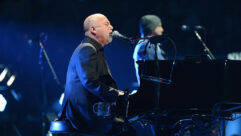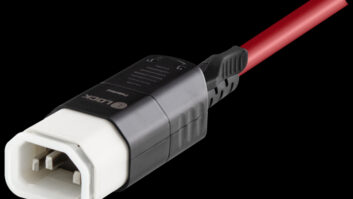
End-to-end Howard Theatre Renovation, Part 2
Apr 20, 2012 10:07 AM,
With Bennett Liles
Listen to the Podcasts
Editor’s note: For your convenience, this transcription of the podcast includes timestamps. If you are listening to the podcast and reading its accompanying transcription, you can use the timestamps to jump to any part of the audio podcast by simply dragging the slider on the podcast to the time indicated in the transcription.
The complete renovation of Washington, D.C.’s Howard Theatre was a big job, and the video setup is second to none. Amit Peleg from design and integration firm Peltrix is going to give us the details on the projection, the switchers, the cameras, and how Peltrix put the whole video system together, next up on the SVC Podcast.
SVC: Amit, thanks for being back with us for part 2 on the big renovation of the Washington, D.C., Howard Theatre for audio and video, and it sounds like with the big names that’ll be playing there what are they going to need there in the way of video displays?
Amit Peleg: Well hi first of all, nice to be back and I would like to, I guess, regarding the video we have to be able to accommodate corporate events and political events in addition to the music and as such we had to come up with a system that will be able to accommodate all those needs. So we have a—three screens, the main screens, one on each side of the stage and one on the center of the stage which is behind the stage which is 27.5 ft wide which can be used during musical events for—to create some kind of video effects, lighting effects on the screen can’t really use it for video because creates a loop with the cameras and then it also projects the light over the musicians so it’s mainly for effects or for corporate events it can be used for those needs if they need to show a video or if they decide to do some kind of a video festival which I heard might happen there, they would be able to use that for as well. The center screen is going to be projected on by a 15,000 lumen Sanyo projector. The two side screens are 7,000 those are actually HD projectors also Sanyo at 70,000 lumens. Right at the entrance to the venue we have two 70 in. screens and Panasonics mainly for the lobby area to show. It’s got a digital signage and also displaying what’s going on inside the room. [Timestamp: 2:25]
And you have some Da-Lite screens hung in there somewhere?
Yes, the left, right, and center screens; the main screens are Da-Lite. Those are the screens that are projected on by the Sanyo projectors. The large one is called a Cinema Contour it’s a 27.5×15.5. [Timestamp: 2:41]
OK and how far away are the projectors from the screens? What kind of projection throw are we talking about?
I believe that the center projector is 55 ft. away from the screen because of the stage depth which adds a little bit the stage is 20 ft. deep and that one is 15,000 lumens and the two side screens are 45 ft. away and those are 7,000 lumens. [Timestamp: 3:05]
What’s the source of the video? What feeds those projectors?
Sure, we have three cameras. A Vaddio PTZ cameras as sources, we have cable TV as sources, we have interfacing of computers all over the room for any kind of corporate events requirements or add more cameras if you want to add more manned cameras to the system. Other sources are Blu-ray, house media computer for any kind of house generated content and those are fed through a, both a matrix switcher and a production switcher—a seamless switcher. We are using an Analog Way production switcher and a Atlona matrix switcher—16×16 HD matrix switcher and the Analog Way seamless switcher is Eikos 400. [Timestamp: 3:55]
End-to-end Howard Theatre Renovation, Part 2
Apr 20, 2012 10:07 AM,
With Bennett Liles
And where are they controlling the Vaddio cameras from?
FOH control booth is where both audio lighting and video are all situated right in the center of the room. We have two eight in. dual HD monitors Black Magic design for mixing and two 24 in. screens for output. Actually we also have a streaming computer that we use in case a corporate event will require sending audio and video out of the building to a different location so we are set up with that as well. [Timestamp: 4:26]
And I guess having everybody right there in the same control area, no communication problems there. I noticed you also got a Crestron control system. How are you using that?
Well, we are trying to set it up so that when the house production staff is not on-site they can still use the system without having a dedicated technical person in house. For example, in the morning when there is no activity in, the music venue start late so in the morning if they open the box office and they need to put on some content on 70 in. lobby screens there is a key pad inside the box office where the operator can use the touch panel to trigger a preset that’s going to start playing audio and video from Western Digital Media players. So one of them can be display one prerecorded content while the other one is displaying another and audio is coming from another source. [Timestamp: 5:15]
And what kind of Crestron controller have you got in there?
That is a CP2E.
OK, that’s well proven. Very well known model.
Yes and we have two touch screens. We have the key pad at box office which is a 4.3 in. wall mounted piece and then at FOH we have a 9 in TPMC9 to be able to override the control from the box office and take control over and manually control individual components in the house. That is actually programmed so that the house staff can create its own presets. So they can choose sort content, sources and destination and manually route signal from source to output. In addition to that we are setting it up so that you don’t necessarily have to have a production switcher running all the time if there are shows that don’t require full blown video production but we still want to have one camera display what’s going on on-stage if it’s a live music show for example, that is actually controlled through the 9 in. key pad on days like that the video production person is on a day off and the lighting guy can just recall one preset or two presets and run the cameras at minimal capacity. [Timestamp: 6:23]
So with all of the control cabling to run did you have any sort of challenges running cabling or I think before you said that all of that was all redone and new.
We had the conduit done for us by an electrical contractor. It was all drawn and designed ahead of time. Of course when you pull cable there always snags and it’s always difficult like bump into problems but it’s been worked out. The wiring for audio, a lot of it was done ahead of time. I had a lot of the wiring designed and done by a company from Italy called Link which does a lot of custom work for us and a lot of it is ready to go and we pull it right into the conduits. Probably for this whole job the way that we do it, it probably takes just about 7 to 8 days to pull all the cables. [Timestamp: 7:08]
OK and all of the festivities and opening hoopla is happening just this month and I know you were really busy on this project. Have you got anything just coming along in the works for Peltrix?
Yes, we are actually already on, partially working on, redoing the BB King Blues Club in New York, which we did about, I think it’s almost 10 years now. We did the initial installation there when they opened and it’s time to upgrade everything there so we’re actually in the process of working on that. There is also another project coming up in Los Angles, which I am not at liberty to discuss at this point but we keep busy. We don’t do many jobs. We do normally two to three jobs per year, but they’re all very large and they take all the energy that a crew of five people can handle. [Timestamp: 7:54]
Yeah, from all I’ve seen about it, the Howard Theater project looks like it was a huge job turning this place from a dilapidated shell into one of the finest showplaces in Washington, D.C. So congratulations on the job and thanks for being here to give us all the tech details.
Sure, my pleasure. Any time.
Thanks for joining us for the SVC Podcast with Amit Peleg of Peltrix. Show notes can be found on the website of Sound & Video Contractor Magazine at svconline.com. Join us again next time on the SVC Podcast.










